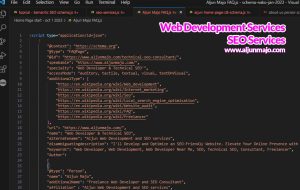Career Shifter Web Freelancing Tips

In today’s fast-paced world, it’s no surprise that many of us are considering a career change. We’re constantly seeking new challenges and opportunities for growth, and with the rise of the gig economy, web freelancing has become an increasingly popular choice. If you’re thinking about making the leap into this exciting new realm, there’s never been a better time to do so. But before you dive headfirst into your new career path, it’s essential to have a solid game plan in place.
We know that switching careers can be both exhilarating and nerve-wracking at the same time. That’s why we’ve put together some practical tips to help you navigate this transition with confidence. From honing your skills to building a robust online presence, these tried-and-tested strategies will ensure you’re well-equipped for success in the ever-evolving world of web freelancing. So sit back, relax, and let us guide you on your journey toward a fulfilling and flexible freelance career!
Identifying Your Marketable Skills
When you’re considering a shift to a web freelancing career, it’s crucial to assess and identify your marketable skills. These are the abilities that potential clients will be looking for, and they’ll form the foundation of your freelance offerings. Start by making a list of all your current skills and experience – don’t forget to include both hard skills (such as programming languages or design software) and soft skills (like communication or time management). From this list, determine which skills are in demand in the web freelancing world and which ones can set you apart from others in the industry.
After pinpointing your marketable skills, take some time to research how you can showcase them effectively on your portfolio or online presence. This might involve creating case studies or writing blog posts that demonstrate your expertise. As you begin applying for projects or bidding on gigs, remember that clients are more likely to hire someone who can clearly convey their value through their skillset. So focus on promoting those abilities that make you unique while also demonstrating how they can help solve a client’s problem or meet their needs.
Building A Strong Online Portfolio
Now that you’ve pinpointed your marketable skills, it’s time to showcase them in the best light possible. A powerful online portfolio can be a game-changer when it comes to securing freelance gigs and attracting clients. In this section, we’ll delve into the essential elements of building an impressive portfolio that truly reflects your expertise and experience.
The foundation of any great portfolio is the presentation of your work samples. Choose projects that demonstrate your range of abilities, as well as the depth of your experience within each skill. Ensure that each item in your portfolio is accompanied by a clear description outlining the objectives, challenges, and outcomes of the project. This will allow potential clients to better understand your thought process and problem-solving abilities. Another crucial aspect of building an online portfolio is incorporating client testimonials or references whenever possible. These add credibility to your skills and provide social proof for future clients. Lastly, make sure to keep updating your portfolio regularly with new projects and achievements – this shows dedication to continuous growth and improvement in your field.
As you put together these components to create an outstanding online presence, focus on maintaining a clean design that allows for easy navigation through your body of work. Remember, first impressions are critical – ensure that your personal brand shines through every pixel on the screen while keeping it professional and approachable at all times. With a strong online portfolio showcasing your talent and versatility as a freelancer, you’re one step closer to making waves in the world of web freelancing!
Networking And Finding Clients
As a career shifter delving into the realm of web freelancing, establishing meaningful connections and securing potential clients is a fundamental aspect of ensuring success. Networking may appear daunting at first; however, it is essential to understand that it can be achieved through various online and offline channels.
To begin with, create a professional online presence by setting up profiles on relevant platforms such as LinkedIn, Upwork, or Freelancer. This will allow potential clients to find you more easily and view your portfolio, showcasing your skills and experience. Additionally, joining online communities and forums dedicated to web freelancing can provide valuable insights into industry trends, job opportunities, and advice from seasoned professionals. Attending industry events, conferences, or workshops in person can also lead to fruitful relationships with fellow freelancers and prospective clients who may require your services. Remember that effective networking does not solely rely on quantity but rather the quality of relationships forged – make an effort to build genuine connections with those you interact with.
Setting Realistic Goals And Expectations
It’s crucial to acknowledge that success in web freelancing won’t happen overnight. You’ll need to invest time, effort, and sometimes even money to build your portfolio, establish your online presence, and create a network of clients. When you’re starting out, it’s essential to set realistic goals and expectations for yourself. This can help you stay motivated and focused on achieving your objectives without getting overwhelmed or discouraged by the challenges that come with a freelancing career.
As you progress in your web freelancing journey, make sure to regularly evaluate and adjust your goals based on the experiences you gain and the feedback you receive from clients. This will allow you to improve your skills and better understand the market demands continuously. Remember that patience is key; building a sustainable freelance business takes time, but with determination and perseverance, you’ll slowly but surely achieve the milestones you’ve set for yourself. And always keep learning – staying up-to-date with industry trends and best practices will enable you to deliver high-quality work that meets or exceeds client expectations.
Managing Your Time And Finances Efficiently
With your realistic goals and expectations in place, it’s time to focus on effectively managing your time and finances as a career shifter in the web freelancing world. This step is crucial as it helps you maintain a healthy work-life balance while ensuring that you’re making enough money to support yourself and your aspirations.
To manage your time efficiently, create a daily schedule that includes dedicated hours for work, breaks, and personal activities. Utilize productivity tools like time-tracking apps or project management platforms to stay organized and prioritize tasks effectively. Consider setting up a separate account for business income and expenses to manage finances. Track all of your earnings and expenditures diligently, set aside money for taxes, and always have an emergency fund for unexpected situations. By mastering these skills, you’ll be well on your way to establishing yourself as a successful web freelancer in your new career path.
Frequently Asked Questions
What Are Some Common Challenges Faced By Web Freelancers When Transitioning From A Traditional Job, And How Can They Be Overcome?
Some common challenges faced by web freelancers when transitioning from a traditional job include adjusting to an irregular income, managing their own schedules, and dealing with isolation. To overcome these obstacles, it’s essential for individuals to develop strong financial planning and budgeting skills to ensure they can maintain a stable cash flow even during slow periods. Additionally, they should create structured daily routines and set clear boundaries between work and personal time to stay organized and maintain a healthy work-life balance. Finally, joining online communities or co-working spaces can help combat isolation and provide valuable networking opportunities with other professionals in the industry.
How Can I Maintain A Healthy Work-Life Balance As A Web Freelancer, Especially When Dealing With Multiple Clients And Projects?
Maintaining a healthy work-life balance as a web freelancer, particularly when juggling multiple clients and projects, requires planning, discipline, and clear communication. It’s crucial to set boundaries by establishing a dedicated workspace and sticking to a schedule that allows for both focused work time and personal downtime. Additionally, managing your workload effectively by prioritizing tasks, setting realistic deadlines, and communicating expectations with clients can help prevent burnout while ensuring you maintain a balanced lifestyle. Remember, it’s essential to prioritize self-care and allocate time for hobbies, exercise, socializing, and relaxation to achieve overall well-being as a successful web freelancer.
Are There Any Specific Tools Or Online Platforms That Can Help Web Freelancers Manage Their Workload And Collaborate With Clients More Effectively?
Yes, there are several tools and online platforms specifically designed to help web freelancers manage their workload and collaborate with clients more effectively. Some popular options include project management tools like Trello, Asana, and Basecamp, which allow you to create tasks, set deadlines, and track progress. Communication platforms such as Slack or Microsoft Teams can streamline conversations with clients and team members. Time-tracking apps like Toggl or Harvest can help you monitor your work hours and maintain a healthy work-life balance. Using file-sharing services like Google Drive or Dropbox also ensures seamless collaboration on documents and other digital assets. By leveraging these tools, freelancers can stay organized, communicate efficiently with clients, and successfully juggle multiple projects simultaneously.
How Can Web Freelancers Stay Updated On The Latest Industry Trends And Skills In Order To Remain Competitive In The Market?
Web freelancers can stay updated on the latest industry trends and skills by actively participating in online communities, attending webinars and conferences, subscribing to relevant newsletters and blogs, and enrolling in online courses or workshops. By doing so, they’ll remain competitive in the market and be better equipped to adapt to new technologies and practices. Additionally, staying connected with fellow professionals through networking sites like LinkedIn can also provide valuable insights into emerging trends and opportunities.
What Are Some Strategies For Dealing With Difficult Or Unresponsive Clients, And How Can Web Freelancers Protect Themselves From Potential Legal Issues Or Disputes?
When dealing with difficult or unresponsive clients, web freelancers can implement several strategies, such as setting clear expectations from the beginning and maintaining open communication throughout the project. It’s essential to establish a written agreement that outlines the scope of work, deadlines, payment terms, and any potential penalties for late payments or cancellations. Additionally, keeping detailed records of all correspondence and project updates can help protect freelancers in case of disputes or legal issues. If necessary, consider involving a third-party mediator or seeking legal advice to resolve conflicts professionally and fairly.
Conclusion
In conclusion, it’s essential for web freelancers to be prepared for the challenges that come with transitioning from a traditional job. By maintaining a healthy work-life balance, utilizing helpful tools and platforms, staying updated on industry trends, and developing strategies to deal with difficult clients, you can set yourself up for success in your new career.
Remember, freelancing is a learning experience and requires constant adaptation. Stay focused on your goals and continually refine your skills and strategies to overcome obstacles and thrive as a web freelancer.
And if you need a freelance web developer with technical SEO expertise, don’t hesitate to message me. With years of experience in web development and a thorough understanding of technical SEO, I can help take your website to the next level and achieve your online goals.


